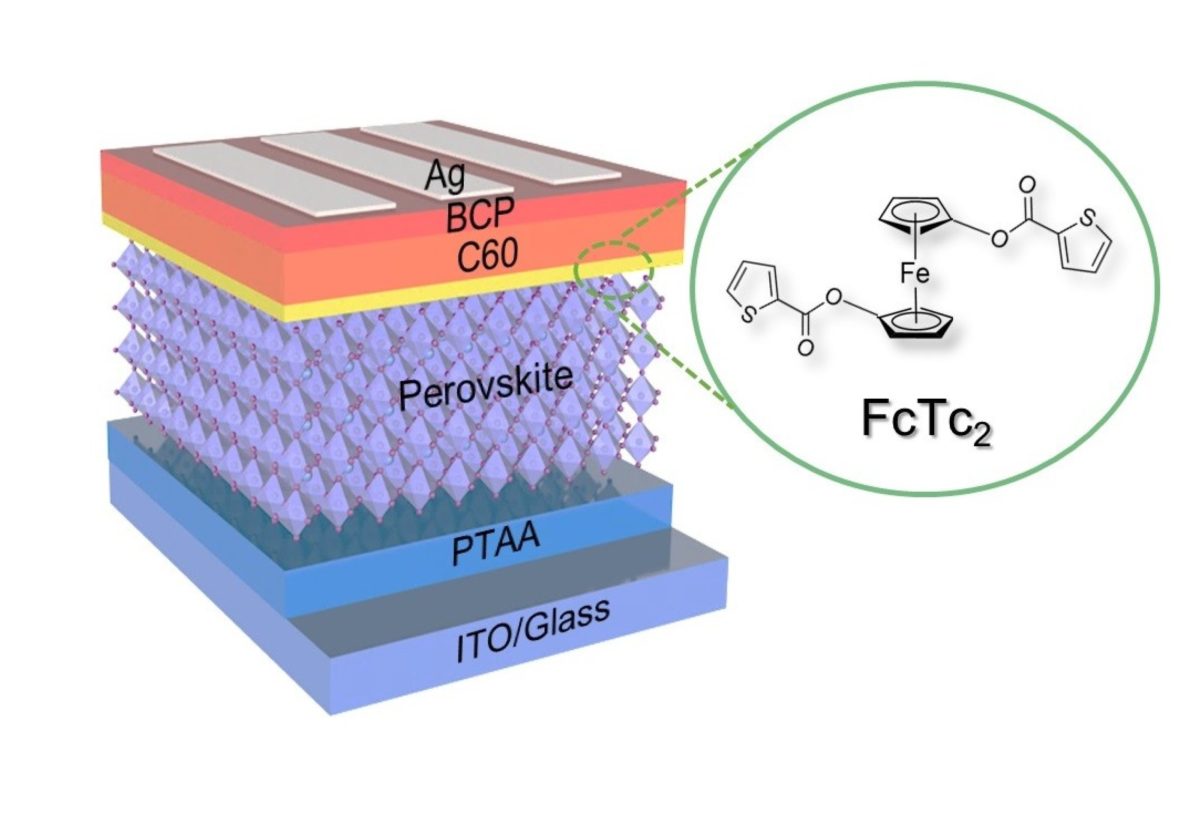Scientists from the City University of Hong Kong (CityU) and the Imperial College London in the United Kingdom have fabricated an inverted perovskite solar cell based on an organometallic compound known as ferrocenyl-bis-thiophene-2-carboxylate (FcTc2), which is claimed to improve both the efficiency and stability of the PV device.
“Ferrocenes are compounds with iron at their center, surrounded by sandwiching rings of carbon,” the researchers emphasized. “The unique structure of ferrocene was first recognized by Imperial’s own Nobel Prize-winner Professor Geoffrey Wilkinson in 1952, and ferrocenes are still being researched around the world today for their unique properties.”
The solar cell has a p-i-n structure and was fabricated with a substrate made of glass and fluorine-doped tin oxide (FTO) coated with a solution based on poly(triaryl)amine (PTAA), which is an excellent hole transporting and electron blocking material, a perovskite layer, a ferrocene layer, a bathocuproine (BCP) buffer layer, and a top electrode based on gold (Au).
The cell was claimed to achieve a power conversion efficiency of 25% and to retain more than 98% of its initial efficiency after continuously operating at the maximum power point for 1,500 hours under stander illumination conditions. “Moreover, the FcTc2-functionalized devices passed the international standards for mature photovoltaics (IEC61215:2016) and have exhibited high stability under the damp heat test (85 C and 85% relative humidity),” the academics stated.
Their findings were published in the paper “Organometallic-functionalized interfaces for highly efficient inverted perovskite solar cells,” published in Science. “We are the first team to successfully boost the inverted perovskite solar cell to a record-high efficiency of 25% and pass the stability test set by the International Electrotechnical Commission,” said CityU researcher Zonglong Zhu.
This content is protected by copyright and may not be reused. If you want to cooperate with us and would like to reuse some of our content, please contact: editors@pv-magazine.com.




Great achievement. Need to work on improving the efficiency and increasing it.